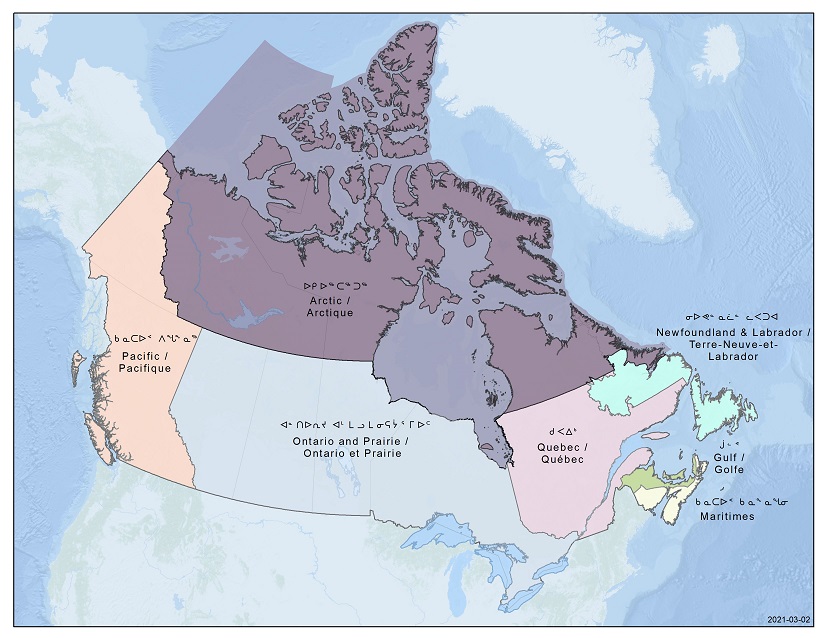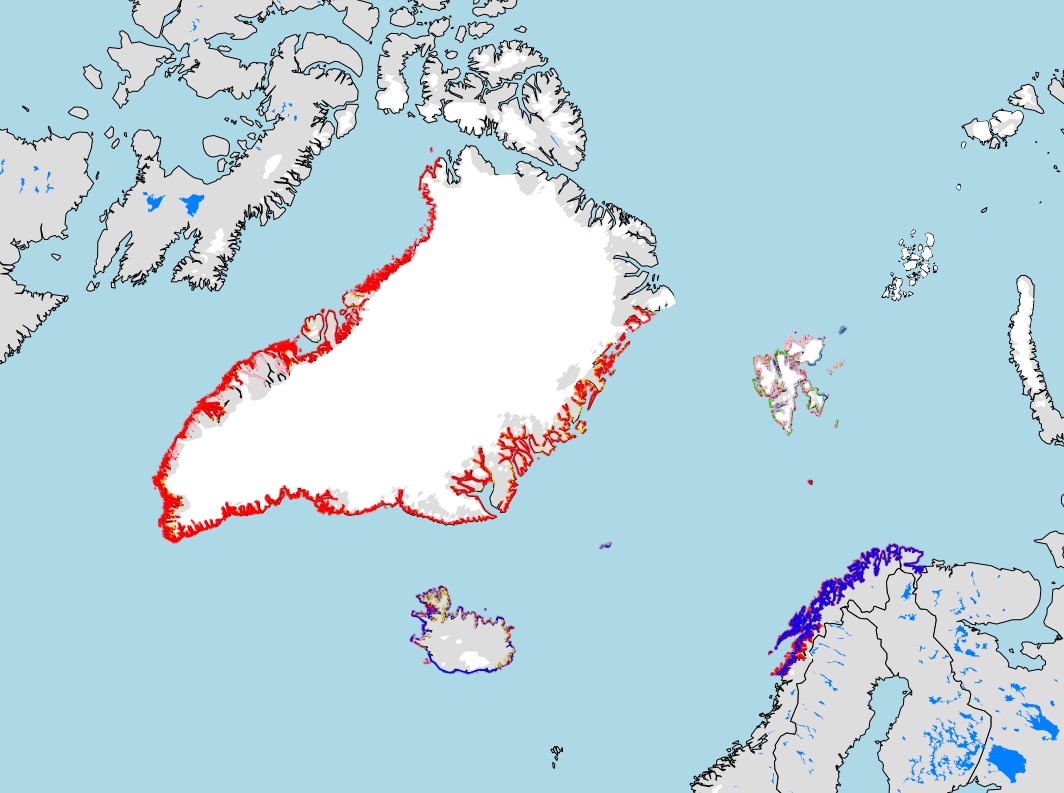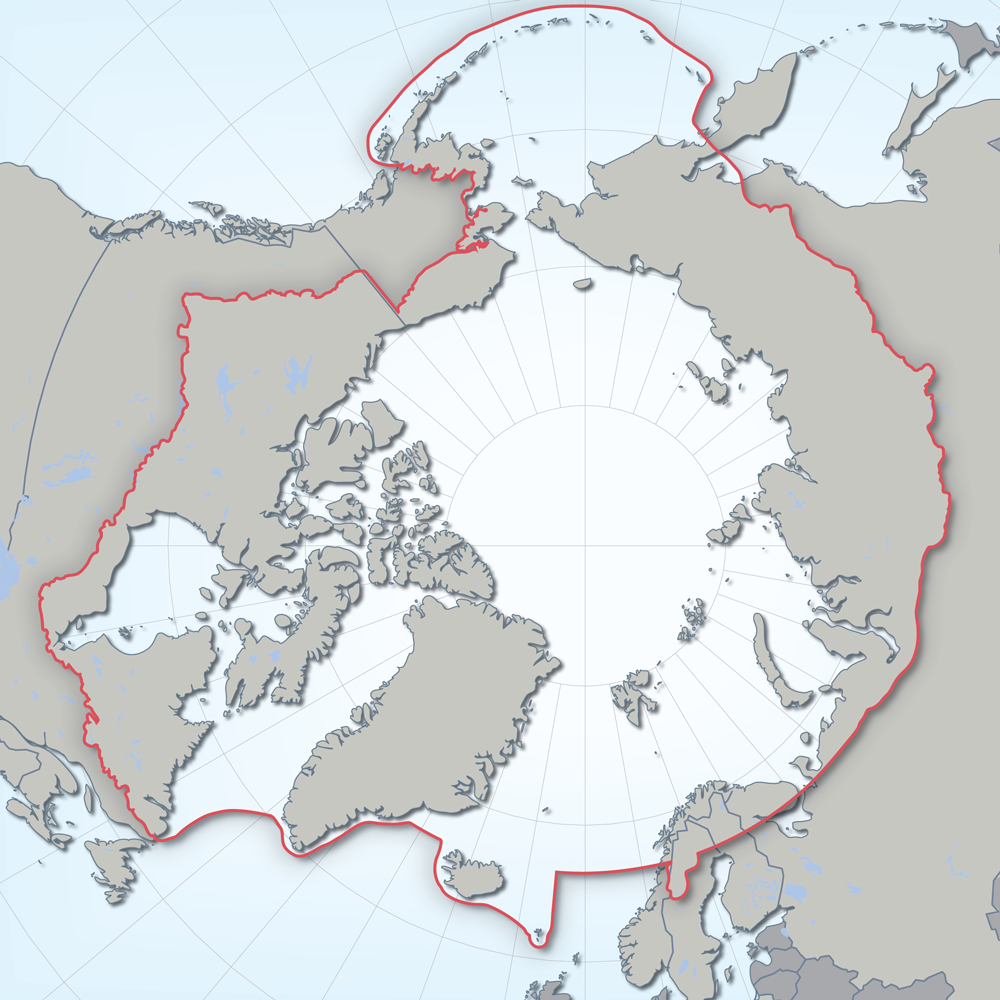Boundaries
Type of resources
Available actions
Topics
Keywords
Contact for the resource
Provided by
Years
Formats
Representation types
Update frequencies
status
Service types
Scale
-
'Province' and 'territory' refer to the major political units of Canada. From a statistical point of view, province and territory are basic areas for which data are tabulated. Canada is divided into 10 provinces and 3 territories. Statistics Canada uses standard codes and abbreviations to represent provinces and territories. The two-digit code that uniquely identifies each province/territory is based on the Standard Geographical Classification (SGC). The code is assigned from east to west. The first digit represents the geographical region of Canada in which the province/territory is located and the second digit denotes one of the 10 provinces and 3 territories.
-

In 2021, the Canada Coast Guard (CCG) and Fisheries and Oceans Canada (DFO) updated its administrative boundaries following the creation a new Arctic region.There are now 7 administrative regions in DFO (Pacific, Arctic, Ontario and Prairie, Quebec, Gulf, Maritimes, Newfoundland and Labrador). DFO and Coast Guard Arctic Regions developed these regions in partnership with the people they serve; this important decision will lead to stronger programs and services to better meet the unique needs of our Arctic communities.DFO and CCG operations and research cover Canada's land and waters to the international boundaries (EEZ) and are in no way limited to the boundaries drawn in the map.
-

In 2021, the Canada Coast Guard (CCG) and Fisheries and Oceans Canada updated its administrative boundaries following the creation a new Arctic region. There are now 4 administrative regions in CCG (Western, Arctic, Central and Atlantic). DFO and Coast Guard Arctic Regions developed these regions in partnership with the people they serve; this important decision will lead to stronger programs and services to better meet the unique needs of our Arctic communities. DFO and CCG operations and research cover Canada's land and waters to the international boundaries (EEZ) and are in no way limited to the boundaries drawn in the map.
-

Standardized metadata template, for identifying knowledge locations on Arctic Coastal Ecosystems applicable for different knowledge systems. This template was developed by the Nordic Coastal Group, composed of the Nordic representatives on CBMP Coastal. The template is intended to identify locations for Indigenous Knowledge, Scientific, Hunters Knowledge, Local Knowledge, and community-based monitoring. The template is composed of two files a Word document that provides the rationale and detailed description for the Excel sheet that allows for standardized data gathering
-

Canadian Hydrographic Service (CHS) has made available all the publishable limits of modern day surveys whose data has been collected since 1989.
-

Defines the area covered by the the Conservation of Arctic Flora and Fauna (CAFF) working group of the Arctic Council. Each Arctic Council country was responsible for defining their Arctic boundary.
-

The 2025 Road Network File depicts the digital road line coverage for Canada. It contains information such as street arc unique identifier (UID), name, type, direction and address range, as well as rank and class. It also includes province or territory (PR) and census subdivision (CSD) information for each side of a street arc (where applicable). The Road Network File is portrayed in Lambert conformal conic projection (North American Datum of 1983 [NAD83]) and is available as a national file.
-

The 2025 Census Subdivision Boundary File depicts the boundaries of all 5,054 census subdivisions, which combined, cover all of Canada. It contains the unique identifier (UID), name and type, as well as the UIDs, names and types (where applicable) of selected higher geographic levels. The 2025 Census Subdivision Boundary File is portrayed in Lambert conformal conic projection (North American Datum of 1983 [NAD83]) and is available as a national file.
-
EMODnet Physics - TEMP_004 - Temperature monthly climatology for North Atlantic Ocean, Baltic Sea, Arctic Sea, Mediterranean Sea and Black Sea, covering the period from 1900 to 2014. This product is based on the SeaDataNet aggregated dataset v1.1.
-

The Environmental Studies Research Fund (ESRF) Regions are legally described in Part I and Part II of the Schedule in the Environmental Studies Research Fund Regions Regulations in the Canada Petroleum Resources Act. This data collection is for illustrative purposes only and includes: • 1 dataset illustrating ESRF prescribed regions 1 to 31 as they are described in the ESRF Regions Regulations. • 1 dataset illustrating the areas where levies are no longer applied to ESRF prescribed regions. These areas include lands that are described in the ESRF Regions Regulations but have since been devolved to the Government of Yukon or the Government of Northwest Territories as part of the 2003 Yukon Devolution and 2014 Northwest Territories Devolution, respectively. Once the Yukon Act and Northwest Territories Act came into effect, lands subject to devolution were no longer considered frontier lands or Canada lands, and therefore no longer subject to ESRF levies under the Canada Petroleum Resources Act. The geospatial extents used in this dataset represent those identified in the Devolution Agreements. Future updates to Part II, section 3 of the Schedule in the ESRF Regions Regulations will reflect the Yukon and Northwest Territories Devolutions. • 3 maps (National, North, South). • 1 table compiling the historical levies for each ESRF prescribed region. Context: The Environmental Studies Research Fund (ESRF) is a research program which sponsors environmental and social studies designed to assist in the decision-making process related to oil and gas exploration and development on Canada's frontier lands. The ESRF is directed by a 12-member Management Board which includes representation from the federal government, the Canada-Newfoundland and Labrador Offshore Petroleum Board (C-NLOPB), the Canada-Nova Scotia Offshore Energy Regulator (CNSOER), the oil and gas industry, and the public. The ESRF is administered by a secretariat which resides in the Offshore Management Division in Natural Resources Canada. Since 1987, the ESRF has received its legislative mandate through the Canada Petroleum Resources Act. The ESRF regions are described in the Environmental Studies Research Fund Regions Regulations. As well, the Canada-Newfoundland and Labrador Atlantic Accord Implementation Act and the Canada–Nova Scotia Offshore Petroleum Resources Accord Implementation and Offshore Renewable Energy Management Act provide legislative direction in the southern ESRF regions. Funding for ESRF is collected annually through levies paid by lease-holding oil and gas companies active in a specific ESRF region. In accordance with the legislation, levies are recommended by the Management Board to the Ministers of Natural Resources and Crown-Indigenous Relations and Northern Affairs for approval. Levies in the southern regions in areas governed by an offshore Accord are subject to final approval by the respective offshore regulator (i.e., the C-NLOPB, or the CNSOER). Levies are calculated by multiplying the levy rate of a region by the number of hectares of land under lease. The ESRF has sponsored studies on biodiversity; environmental effects and monitoring; social and economic issues; ice, icebergs, and ice detection; oil spill research and countermeasures; sea bottom ice scour; sediment transport; Indigenous Knowledge; and waves.
 Arctic SDI catalogue
Arctic SDI catalogue